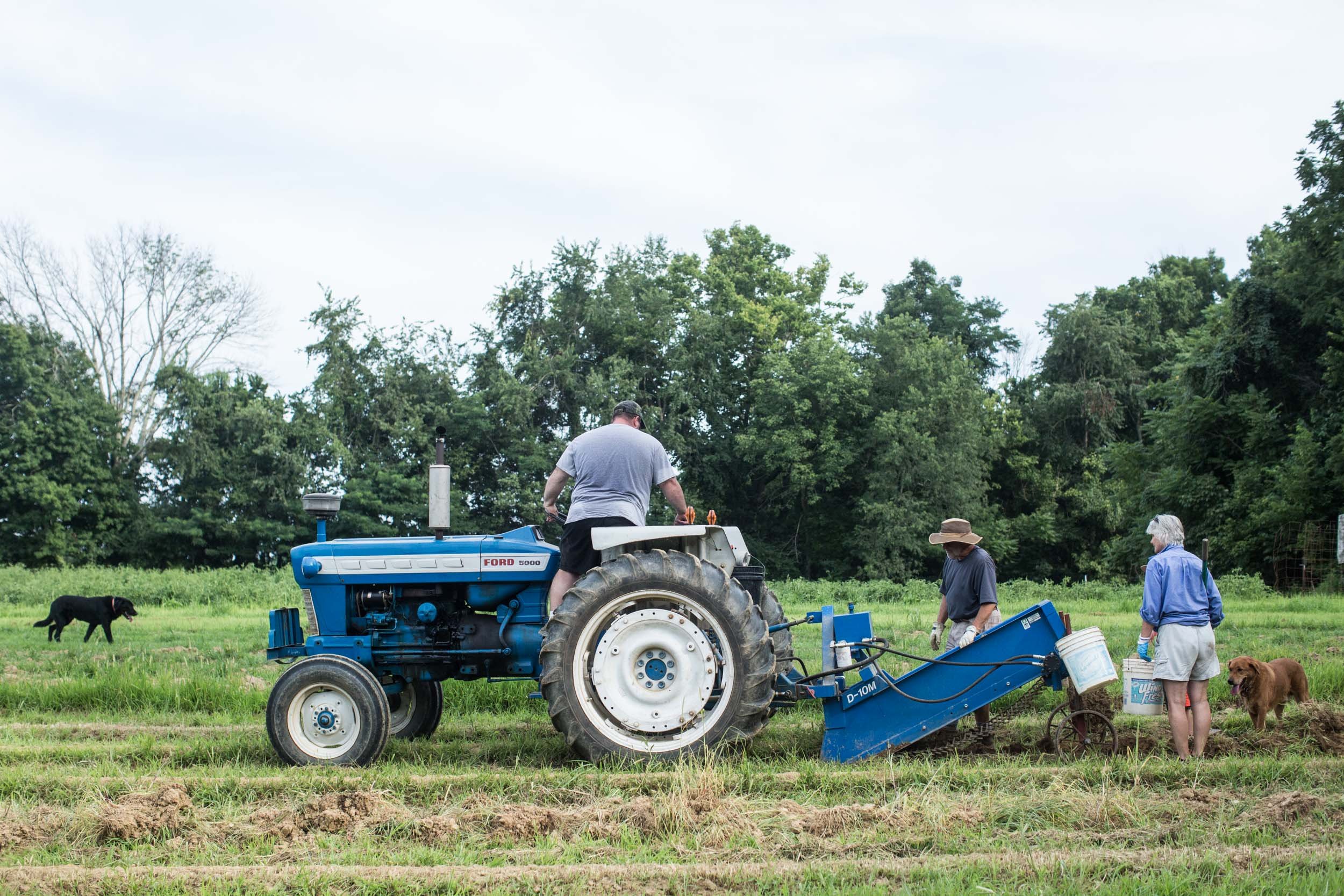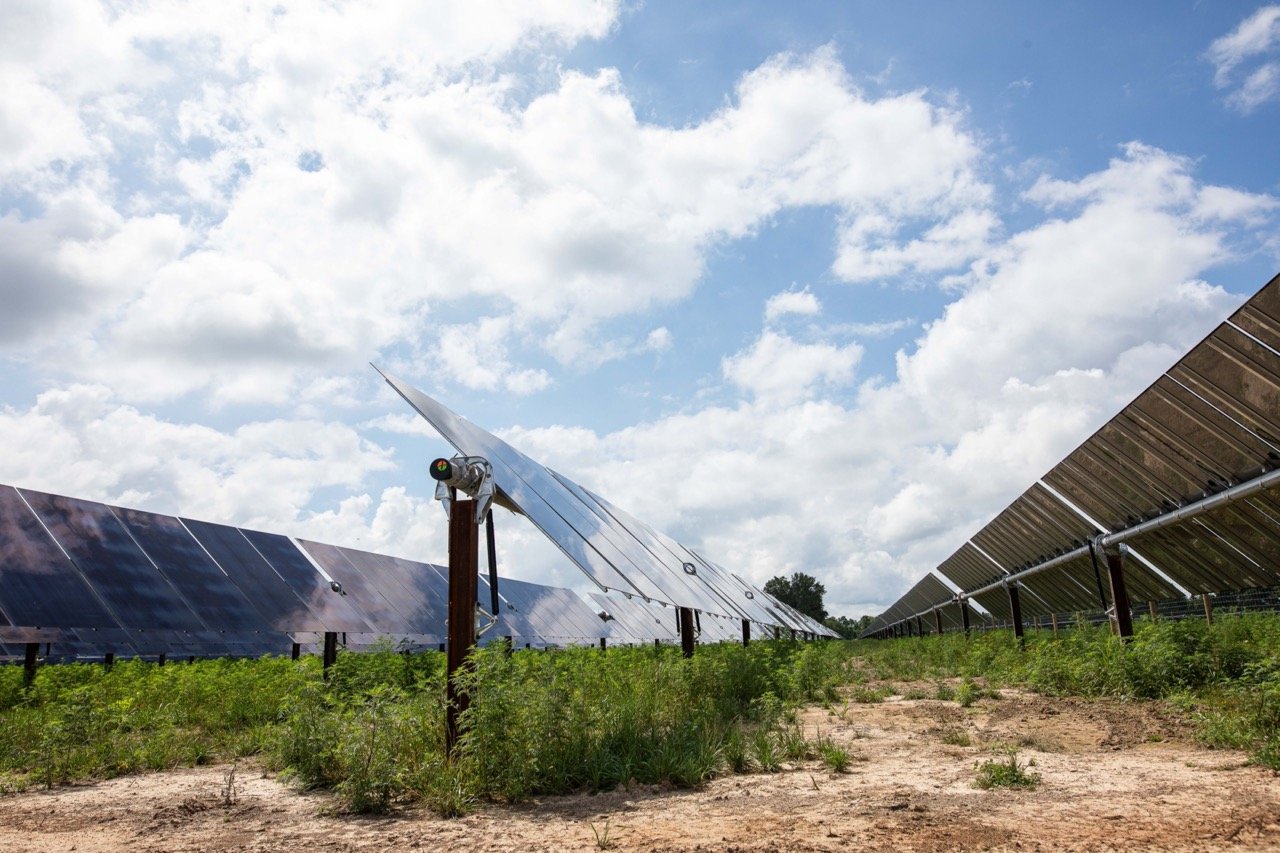A Place of Their Own
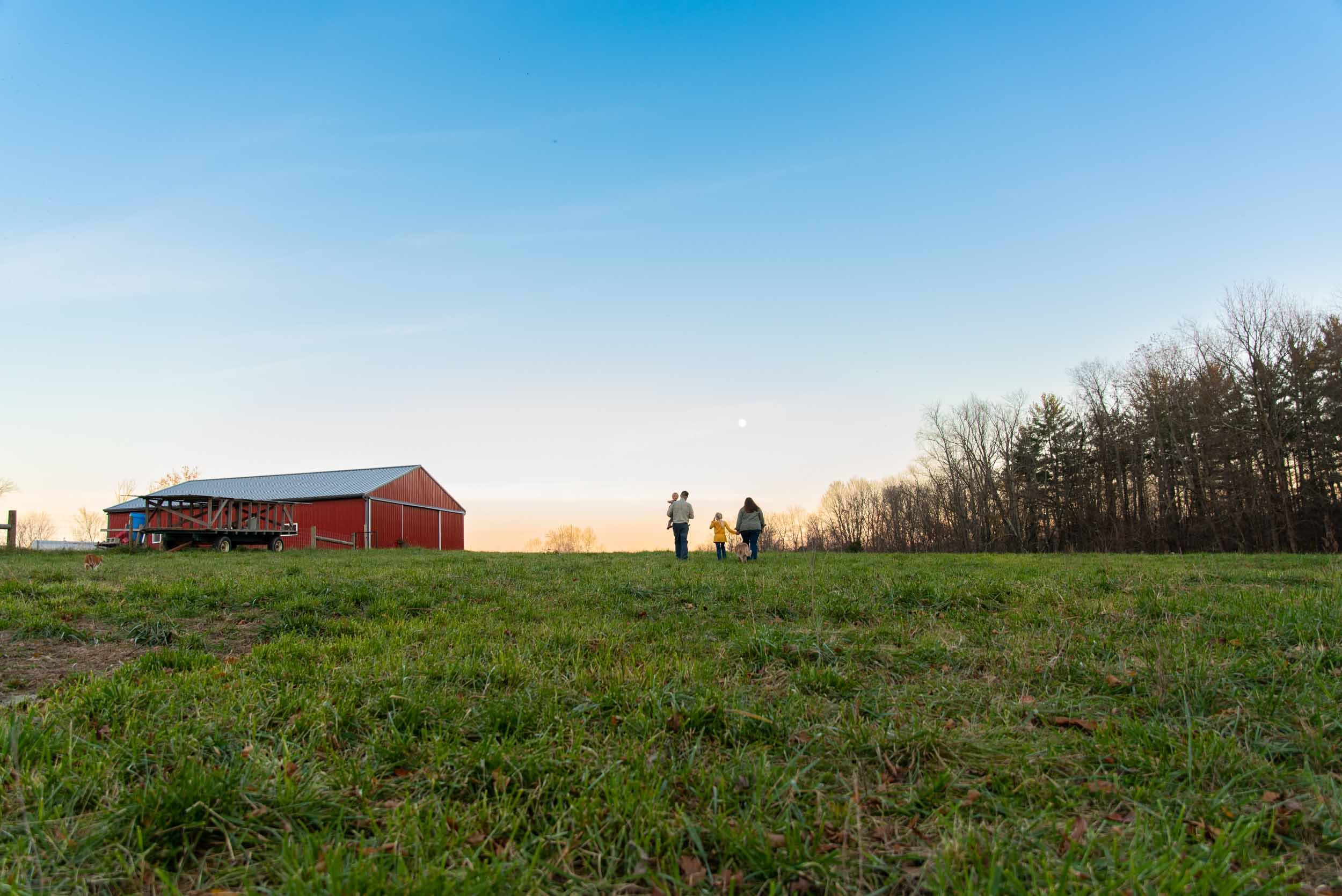
Our farming population is aging. But those who want to get into the field are finding land ownership to be a huge obstacle. Here’s why farmland access matters in the Ohio Valley.
Photos by Anna Sharp
Dana Workman Stacey looks out her window and spots her two young daughters, each cradling a barn cat, playing in the yard under the watchful eye of the family dog. Schoolwork can wait; it’s too nice a fall morning to be indoors.
Bringing up their kids on a farm, having the flexibility to homeschool them, and raising healthy food for themselves and their neighbors—it’s why Stacey and her husband, Jesse, bought this 45-acre Hillsboro, OH, property in 2018.
But buying that farmland wasn’t easy. It’s not easy for any beginning farmer in the Ohio Valley region, or across the country.
According to a survey conducted in 2022 by the National Young Farmers Coalition, land access is the biggest hurdle for people who want to get into agriculture.
And getting younger people into farming is a real concern as the country’s population of farmers ages. The U.S. Department of Agriculture’s most recent Census of Agriculture, in 2017, paints a pretty stark picture: One third of America’s 3.4 million farmers are over 65, and more than half will reach retirement age by 2032.
Agricultural land is shrinking even as large farms are growing in size (the average farm is 441 acres). Small operations make up 76% of farms but just 3% of sales. (The census happens every five years; results from 2022 will be released this year.)
That census, though, had one bright spot: The number of beginning farmers increased by 5% over the 2012 count. The USDA defines beginning farmers as those with 10 years or fewer of experience.
As those new farmers begin to till soil and graze livestock, they’re running into a huge roadblock: The costs of starting a farm are high.
The Ohio Valley’s Shrinking Farmland
“The No. 1 challenge for new farmers is affordability of land, period,” says Kelly Cabral, a Farmland Specialist who works with the Ohio Ecological Food & Farm Association (OEFFA).
While leasing farmland is certainly an option, most of the people Cabral advises prioritize the security that ownership provides. “If you’re making investments in a property,” she says, “if you want to farm organically and want to improve the land over time, it’s difficult to do that if you’re not going to see any long-term benefit or if you’re going to have to move once your lease is up.”
But purchase prices are high and rising. “The averages per acre in Ohio are all over the place,” Cabral says, “$5,000 to $6,000 is the low end, $15,000 is the high end, and it’s rising 5% to 6% per year.
“For a livestock operation,” she continues, “you’d need 100+ acres to have a sizeable herd that can make you money, and that translates to hundreds of thousands to a million for good, workable land.”
We’ve read the headlines about the escalation of home prices over the past few years. Farmland is getting more expensive, too. Why? Credit the confluence of two forces: those retiring farmers ready to sell, and America’s persistent shortage of housing. National Association of Realtors data shows an ongoing shortage of about 5.5 million new homes across the country, in cities big and small. Where are those houses gonna go? On farmland, mostly.
A study last year by the American Farmland Trust found that between 2016 and 2040 in Ohio alone, more than 518,000 acres of farmland will be paved over, fragmented, or compromised by development. That equals 4,000 farms, 8,100 jobs, and $274 million in farm output. Warren, Licking, and Delaware counties—on the outskirts of Cincinnati and Columbus—are most affected by this loss of farmland. Most of that development is categorized as high-density commercial/industrial/residential and low-density residential. Indiana and Kentucky will both see north of 450,000 acres lost, also concentrated in suburban and exurban counties, in that same timeframe. For example, in Licking County, OH, the massive Intel semiconductor plant under development is consuming farmland for both manufacturing and residential use.
As she works with farmers seeking to buy or sell land in Ohio, Cabral sees that dynamic in play. “Anecdotally, it’s all about breaking farmland up into parcels and selling over time for residential development,” she says.
Consider a family farm of, say, 100 acres. As the older generation retires and nobody else in the family is interested in farming, they might divide the property among siblings, and those smaller parcels are easier to sell, Cabral says. The real estate principal of “highest and best use”—seeking the highest value for a property regardless of its current use—almost guarantees that those pieces will be sold at a premium for development instead of retained as farmland. “They might be able to preserve the land for another generation, but how long after that?” Cabral asks. “Highest and best use—and I put that in air quotes—means that around urban areas in particular there will be more and more price pressure on farmland.”
A farmer’s rent or mortgage payment makes up a chunk of their operating expenses, in addition to seed or animals, infrastructure (fencing, water, hoop houses), equipment, labor, processing, transportation, marketing … it’s a long list. These costs together influence the price we consumers pay for local food, and increases for any of these things squeeze the farmer’s profit margin.
Figuring Out Financing
If finding affordable land is hurdle No. 1 for beginning farmers, accessing financing is a close second. It’s a chicken-and-egg problem (pun intended): Lenders need to see proof of business viability to make loans, and farmers need land in order to run a viable business.
A few government programs can help. The USDA’s Farm Service Agency offers down-payment loans to help beginning farmers and ranchers purchase land, and the agency guarantees additional loans secured through a conventional lender. The FSA offers other loans to purchase or expand a farm or ranch, including property improvements, conservation projects, and purchase of livestock, seed, and equipment.
Through her OEFFA role consulting with farmers, Cabral encourages would-be buyers to apply for these FSA loans, which are government-backed and have lower interest rates than conventional financing. She also advises sellers who want to keep their land in agricultural usage and has seen some creative transfer options including agricultural easements and seller financing. Placing a property in an easement allows the owner or land trust to sell a property at its farm value and not at its developed value; it both reduces the cost for a buyer and protects the land from non-agricultural development. A new Ohio state law, HB 95, provides temporary income tax credits for qualified beginning farmers and for landowners that sell or rent agricultural property to beginning farmers. The program, Cabral notes, is so new that the application process has yet to be finalized, but it aims to provide some tax relief to emerging farmers.
Building the Life They Want
Dana and Jesse Stacey availed themselves of loan programs like these when they established Grass Powered Poultry & Meats on the farm they purchased in Hillsboro. Neither of them come from farming families, but both have degrees in agriculture and felt a strong pull to pursue that way of life. They raised chickens for a few years on their homestead property before seeking a proper farm.
Even though she worked in agricultural finance as a real estate appraiser, Dana Stacey found it challenging to find land of their own. “I had an ‘in’ on the market, but I can’t say that it helped immensely in our search,” she says. “We were just like everyone else: looking as properties hit the market and hoping that we could be there right away to make an offer. There were properties that were perfect—they had a house, had fencing, had space for livestock—but completely out of our price range. Some places we were interested in were quickly under contract. Most of the buyers we were competing against were local farm families like us, but there are also commercial buyers active in the market who are pushing prices higher.”
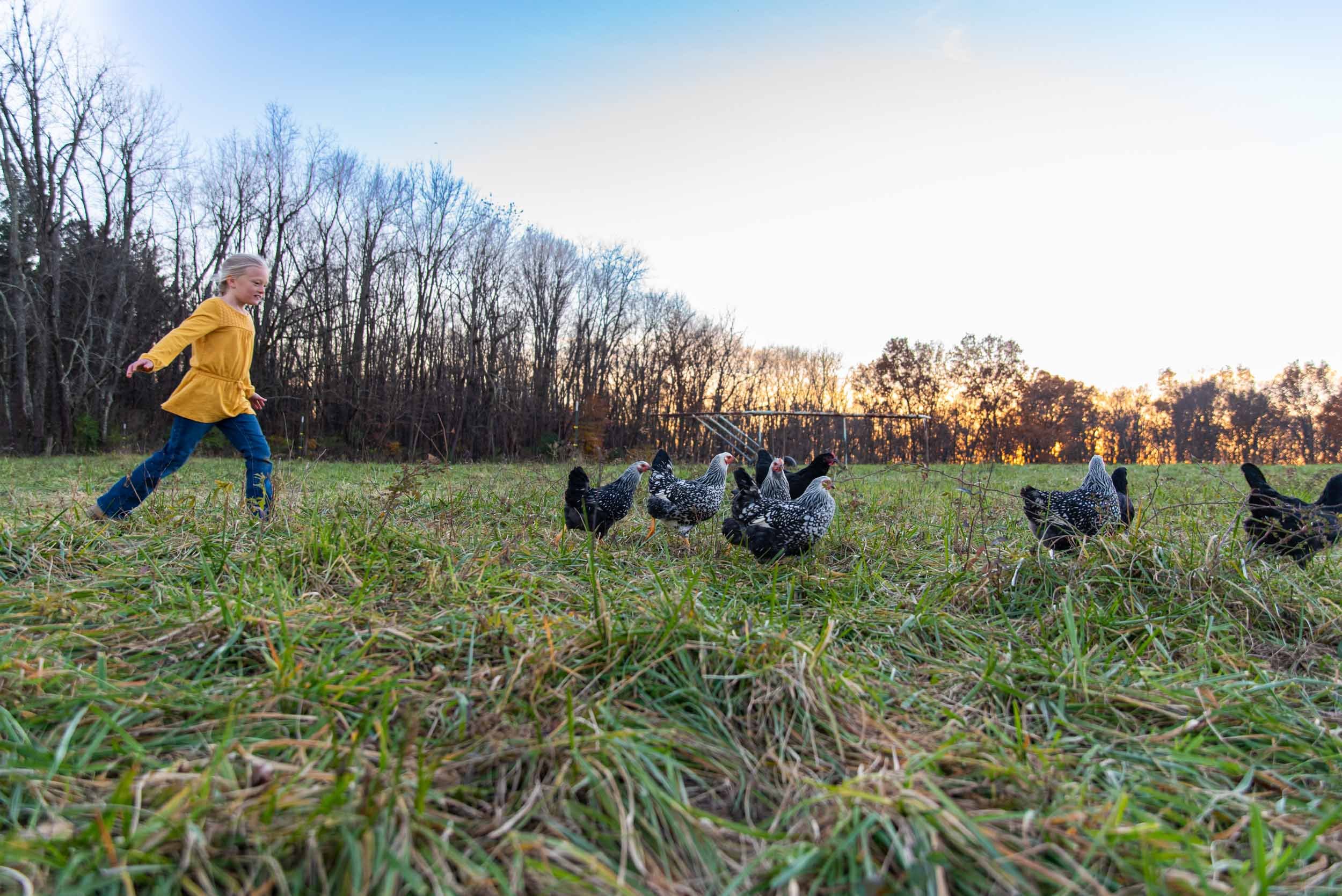
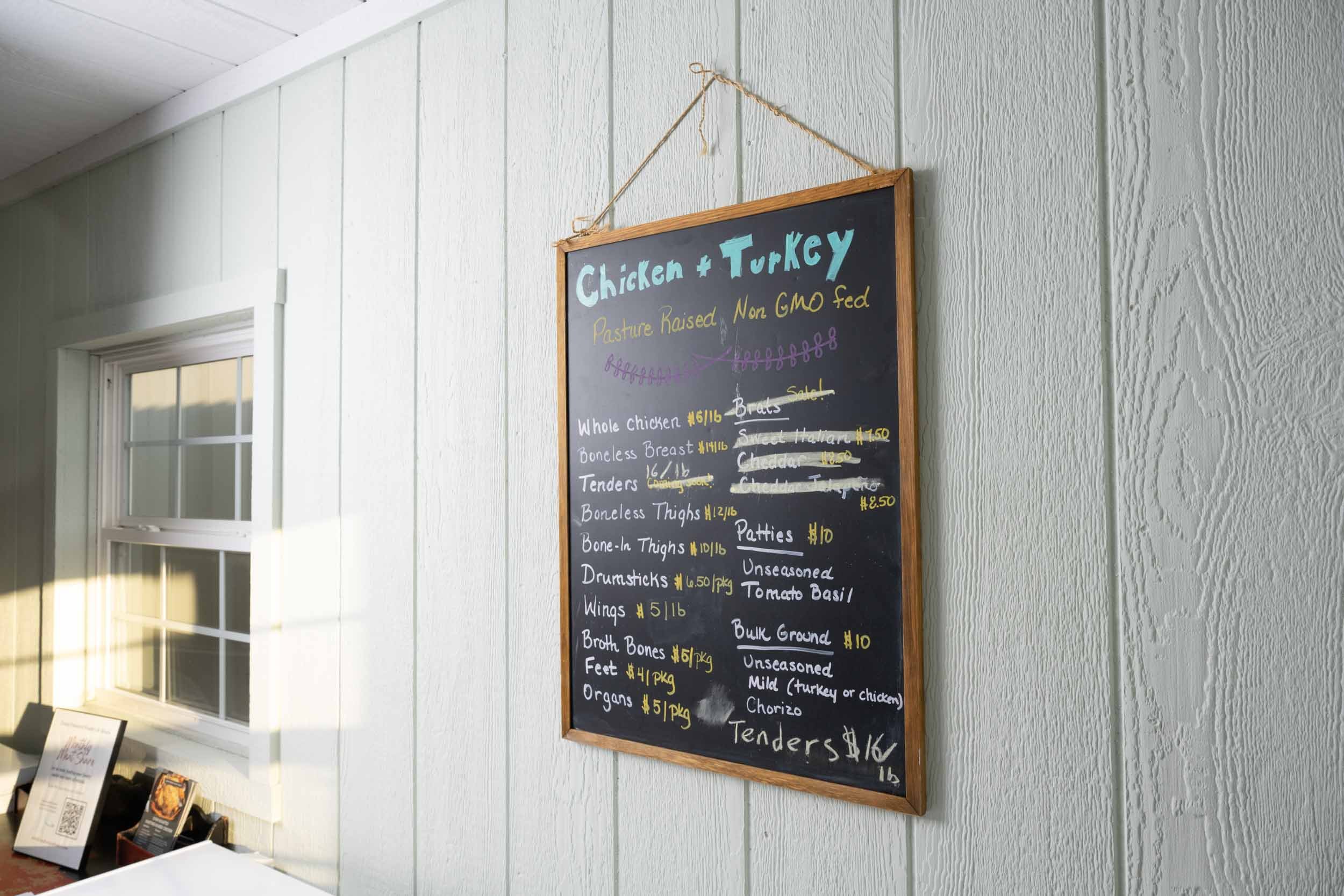
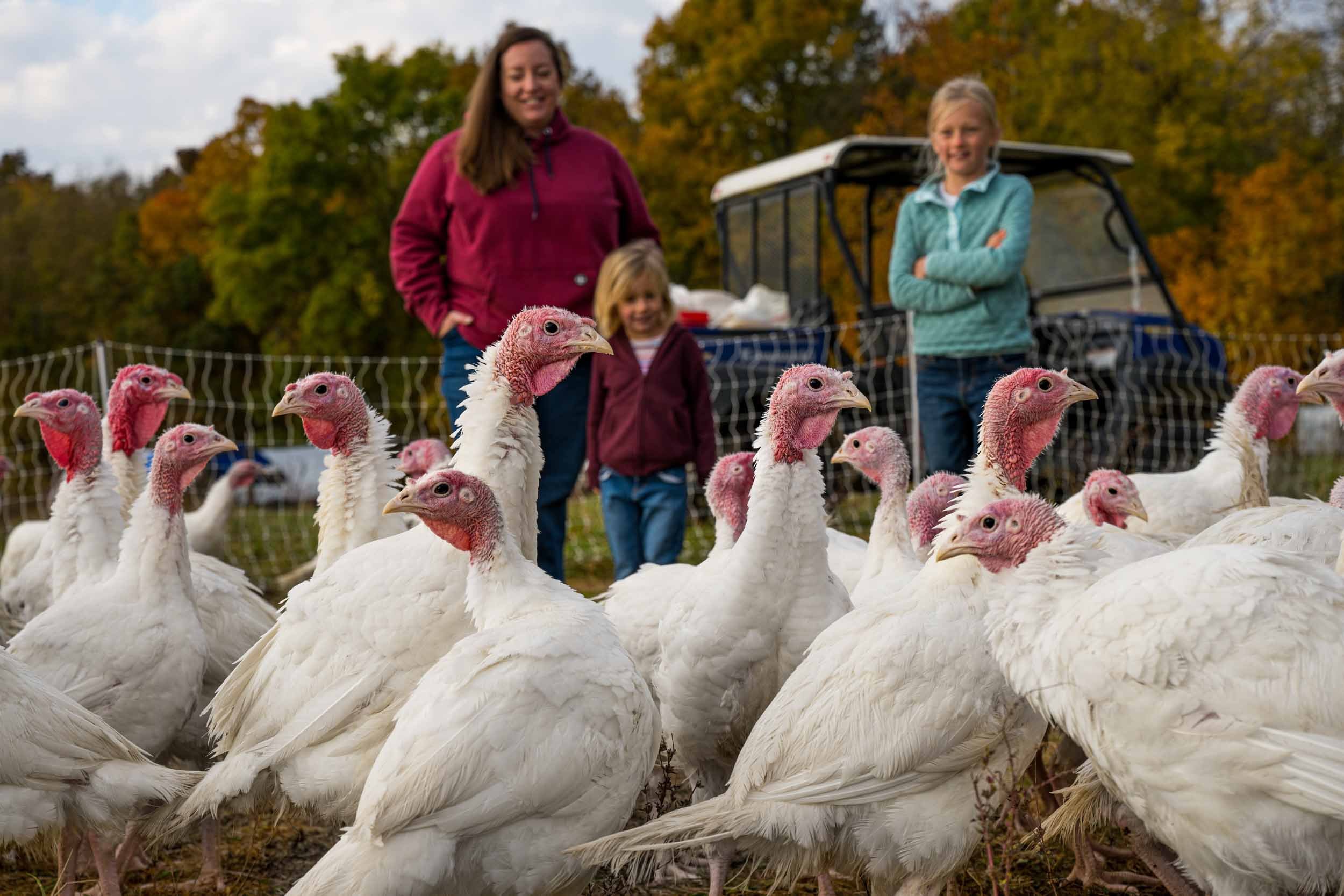
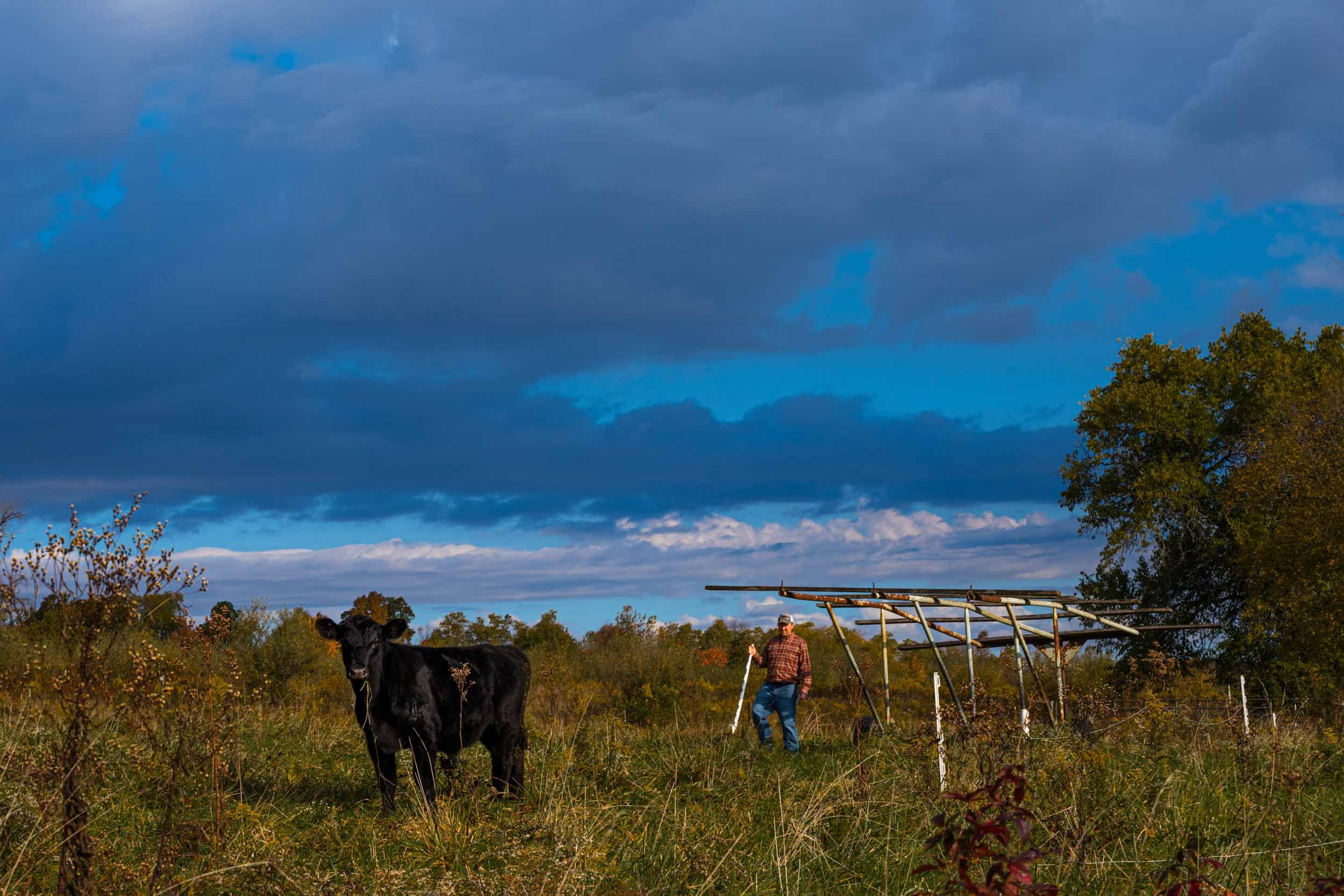
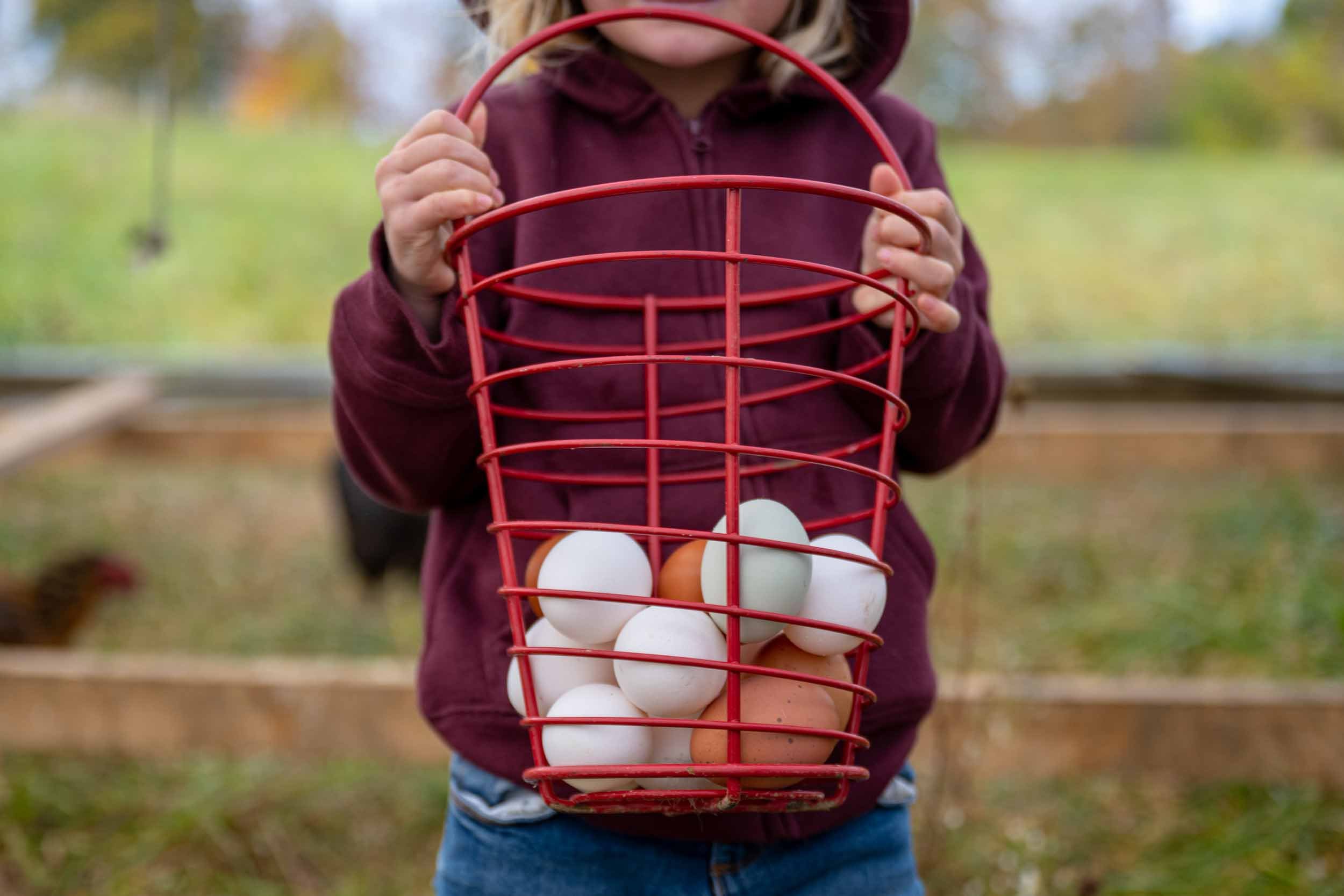
They’d viewed the Hillsboro property when it came on the market and were unimpressed. A year later, the price had dropped significantly and they took another look. It needed a ton of work, but the couple made the purchase. Selling their previous home provided some capital for immediate improvements like fencing. They paid $300,000 for the property, and have since invested another $75,000 to $100,000 in it.
The Staceys used FSA’s beginning farmer loan to cover their down payment. A conventional lender, she explains, requires 20% to 25% of the purchase price as a down payment; with the FSA program, they put 5% down and FSA financed 45% of the price at a low rate over 20 years. A conventional lender financed the remaining 50% at their rates and terms. Having nearly half the mortgage at a low rate is a financial benefit, Stacey says.
She previously worked as a loan officer for FSA and knew what was required. “These loans are available to everyone, but it takes a ton of time to apply and it’s hard to devote that kind of time when you’re in the looking phase, and the application changes every time you look at another property. And a lot of sellers don’t like that it takes longer to close. If a buyer walks in with a bunch of cash they’ll sell to that buyer.”
The Staceys also tapped the Environmental Quality Incentives Program (EQIP) through USDA’s Natural Resources Conservation Service, which assists farmers and forest owners to integrate conservation practices into working land. EQIP cost-shares land improvement projects; it will reimburse the Staceys for part of the expense of adding a watering system and improving pastures.
On their rolling Highland County farm, about 15 cattle, a herd of hogs, more than 2,000 chickens, and a flock of turkeys graze, root, and peck. Dana and Jesse started down this path with a goal of raising healthy food for themselves and their neighbors, and now see farming as something more. Daughters Eliza and Brynn are “living the coolest life,” Stacey says. “They’re free-range children.”
She continues: “We wanted to own our farm so we could structure our life the way we needed to and not have to worry about the terms of a lease agreement. We wanted the freedom to live on our terms—and to know that this is home.”
Finding Creative Paths to Ownership
Like the Staceys, Sharon and Greg Maish began farming on a personal scale because they value the ability to produce most of their own food. They began with two acres in Hilliard, OH, a suburb of Columbus. A flock of backyard chickens led to a vineyard, a fruit and nut orchard, and beehives as they gradually acquired adjacent properties to create a six-acre homestead. They wanted to add livestock, but the property’s limitations and Hilliard’s zoning prohibited it. So they went searching for a farm.
At the same time, Mary Lou and Tom Shaw of Milk and Honey Farm were looking to retire, sell their farm, and move closer to family. The couple had posted their 48 acres for sale on Heartland Farm Link, OEFFA’s farm real estate listing site. The few prospects they’d connected with didn’t quite fit their vision.
Serendipitously, the Maishes and the Shaws knew each other. Sharon had purchased her heirloom chickens from Mary Lou, a fan of the Dorking breed. Sharon had visited Milk and Honey Farm and found it idyllic. “I thought, if we ever have a farm it would look like Mary Lou’s,” Sharon says.
When Sharon and Greg learned that Mary Lou and Tom were selling, an arrangement clicked into place. “It was a natural transition for us to become larger,” Greg says. “And when Tom and Mary Lou brought it to us, it was like we manifested it.”
Both Tom and Greg had real estate investment experience and discussed creative financing. In what Greg calls “a meshing of kindred spirits,” the Shaws agreed to act as the lender instead of a bank. The Maishes offered a down payment, and the Shaws hold a three-year mortgage, receiving payments directly from the Maishes. They retained a lawyer and title company to close the deal. “We could show them that we had a history and knew what we were doing and gave them a nice chunk to help them on their way,” Greg says. “It’s not a long term, like a conventional mortgage, it’s just three years. This has bridged the gap until we go to conventional financing.”
The financial flexibility means Sharon and Greg have time to make big decisions about how to grow a farming business, at what pace, and in what direction. Sell at farmers’ markets? Create an agritourism business? They’re considering several options, all while they dedicate themselves to the new Maish Meadows Farm that they’ve come to love. With help from a neighboring caretaker, they raise goats, pigs, cows, turkeys, and chickens.
“Our vision for the property was very much in tune with Tom and Mary Lou’s: the heritage breed animals, the solar and wind power, carbon sequestration, wetland maintenance,” Greg says. “A lot of things aligned.”
When Leasing is the Only Option
When buying a house, most of us have to consider just two financial factors: 1) can we afford it? and 2) will it appreciate over time? But farmers buying land face more complicated math: What kinds of investments do we need to make in this property? Will the land make us a sustainable living?
Livestock farmers especially have to pour tens of thousands of dollars into a farm almost immediately to provide fencing and water and shelter for animals. That’s on top of the land itself. And that becomes cost prohibitive for many beginning farmers like Kyle Jeffers.
Jeffers is in the market for land of his own. He has the experience and the vision, but the math makes it almost impossible. “At first, I was looking at purchasing, but the only way to purchase is to go way out of the city, and if it’s that far out, the home is typically not livable,” he says. “My only option is leasing.”
Leasing farmland, too, has its complications—not least of which is finding alignment with the landowner on a vision for the property. Jeffers knows he has an unconventional approach. More than three years working on a farm near San Francisco turned him onto Korean natural farming. It’s focused on building so-called indigenous microorganisms, which creates a living soil ecosystem that requires minimal inputs and creates minimal waste. Like Korean cuisine, this farming technique uses fermentation to create natural fertilizers to provide nutrients for crops and animals—think of fermenting fallen apples from an orchard to create a top dressing that feeds soil microorganisms, just as fermented kimchi feeds the good bacteria in the human digestive tract.
“I never thought in a million years that this is what I’d be doing,” says Jeffers, who currently works in livestock management at Turner Farm. “Taking care of animals is great, but what I really got into is the holistic, sustainable approach. That’s what I want to do: bridging natural farming and rotational grazing in livestock production.”
To achieve that vision, Jeffers needs to find an agreeable landowner. Unlike renting an apartment, where it doesn’t matter if you and the landlord have different decorating styles, leasing farmland requires the two parties to be in sync. “One of the cons of leasing is that you have to develop a relationship with that landowner and have the same vision for managing the land,” he says. “It’s been a challenge to explain my vision to them.”
Jeffers has done his homework, participating in OEFFA’s four-part land access workshop, which taught him that leasing was his most viable option in the near term, even though it doesn’t offer the potential to create equity and comes with less stability. And he spends time each day looking at real estate listings. “I’m just trying to be optimistic,” he says. “There are a lot of times when it can really get you down. You have this goal, you want to do the right thing for the land and for the environment, and you’re just constantly running into reasons not to do it. I’ve got to just keep pushing forward, and one day at the right time it’ll come to fruition.”
A Case for Preserving Farmland
It’s kind of like a dating app: OEFFA’s Heartland FarmLink connects landowners seeking to sell their farm property with folks who are looking to lease or purchase land.
OEFFA’s Kelly Cabral says the resource is much needed. “Over 40% of America’s agricultural land will be in transition in the next 15 years, and almost half will be transitioning to new hands,” she says. “Do you want those hands to be a new farmer who will grow food and support all the intricate connections in the community? Or do you want to sell to a developer who’ll put in who knows what?”
OEFFA runs a land transfer workshop for farmers thinking about moving on from their property. What will they do with the land? What do they prioritize for the property? Who would they envision as an ideal steward of the property? The program helps farmers assess the intangibles that make their acreage valuable to other farmers, and to role-play conversations with prospective buyers.
In addition to a direct sale, Cabral also would like to see conservation easements and land trusts more widely used as vehicles for preserving farmland as farmland. “Easements are not utilized enough,” she says. By protecting land with an easement, an owner can sell at its farm value—not at its developed value—which removes development rights to the property so it protects the land and reduces the cost for a buyer.
The Coalition of Ohio Land Trusts is another resource for sellers and buyers, with information about how to create a conservation easement and links to find lands held in easements that might be available to farmers.
In his newsletter to friends of Grassroots Farm & Foods, livestock farmer Drausin Wulsin offered these words: “We need more families, pension funds, and land trusts to own land for the long run, 50 to 100 years, so producers can rent from them at low prices and not be burdened by cost of ownership. Including cost of land in the economics of nutrient-dense food is prohibitive.”


